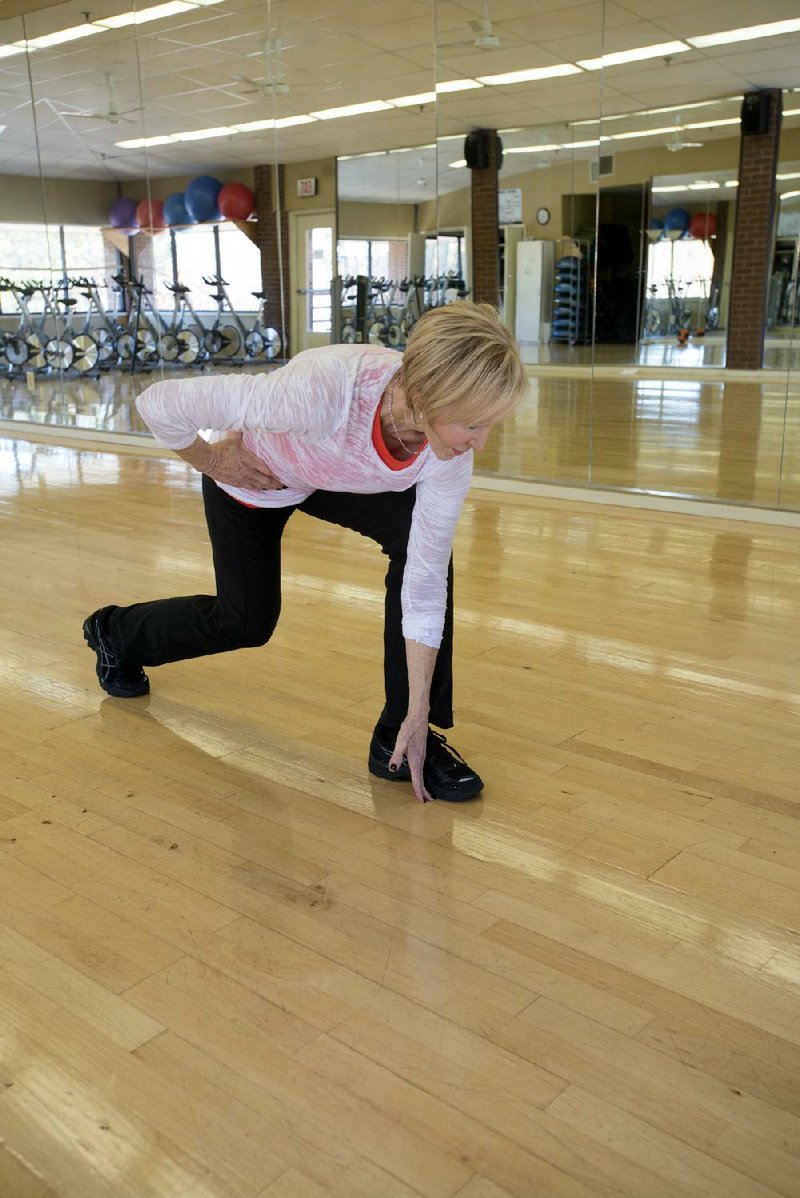LITTLE ROCK — With Old Man Winter breathing down our necks and the new year upon us, the fitness swell begins to gain momentum for 2013. Naturally, we begin to consider our fitness goals for the coming year and wonder how we can achieve them.
This week, I’ll discuss a few guidelines for developing quantifiable goals that will truly motivate your workouts. I’ll also introduce an exercise that can be plugged right into any New Year’s workout.
Goals are often expressed in general terms; rarely are they stated with precision. This is exactly the reason that most such plans fall by the wayside. The whole undertaking should follow the SM-A-R-T principle (specific, measurable, attainable, realistic and time-oriented).
Specific, measurable goals address one attribute and are quantifiable in some way. For example, “I want to lose weight” is too general. But “I would like to lose 30 pounds” is certainly specific - to lose 30 pounds - and it’s measurable because you can weigh yourself now and again in two months to evaluate your achievement.
However, a goal must also be attainable and realistic. Ifyou’re currently at or below your ideal weight, the stated goal of “I would like to lose 30 pounds” isn’t attainable or realistic.
These two components of goal setting can be evasive if the individual is not particularly familiar with the effort required to reach the goal. The more you know about the type of goal you’re setting, the better chance you’ll be able to evaluate whether it’s attainable and realistic.
Let’s say you’ve never before wanted to lose weight and don’t know how to proceed. In that case, it’s easy to set an unrealistic, unattainable goal. So before committing to your goal, you’ll want to consult a trustworthy expert - get some education.
The final step in setting an appropriate goal is to be sure it’s time-oriented. You definitely need a start and a finish date to your goal program to create a sense of urgency. Without it, you’ll stop trying as soon as the first inconvenience arises.
For the example above - a goal of losing weight - a rate of 1 to 2 pounds a week is often attainable and realistic. Assuming someone had 20 pounds to lose, 12 weeks would be a realistic time frame. So a S-M-A-R-T goal would be something along the lines of “I will lose 20 pounds between Jan. 1 and April 1.”
Now that you have a handle on appropriate goal setting, it’s time to put together your goal achievement plan. This week’s exercise will fit right in with most weight loss programs because it burns calories and can provide strength benefits for the lower body musculature. Stronger leg muscles should raise your metabolic rate a bit and thereby help you burn calories at a faster clip.
If you’ve ever watched a speed skater, you know how this one will look.
- Start with your legs just beyond shoulder width apart and your hands on your hips.
- Step diagonally backward with your left foot behind your right foot.
- At the same time, reach to the left with your right hand and try to touch the floor as you lunge down with your right knee.
- Step back to the starting position with the left foot and repeat on the opposite side.
- Move slowly as you alternate sides for 12 repetitions on each side.
The Skater Lunge also could be a warm-up exercise. It’s a great movement for increasing blood flow to the quadriceps in preparation for jogging or elliptical exercise. Enjoy!
Matt Parrott has a doctorate in education (sport studies), a master’s in kinesiology and is certiÿ ed by the American College of Sports Medicine.
ActiveStyle, Pages 28 on 12/24/2012
